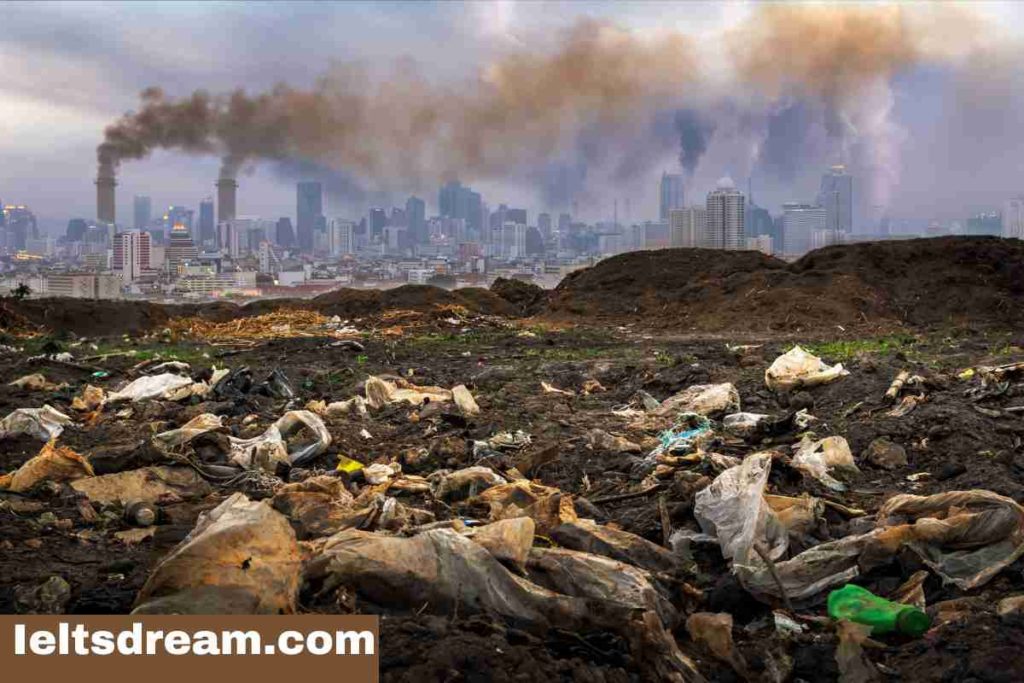Describe a place you visited that has been affected by pollution.
You should say:
Where is it?
When you visited this place?
What kind of pollution do you saw there?
And explain how this place was affected?
Sample 1 Describe a Place You Visited That Has Been Affected by Pollution
A few years ago, I visited a place that had been severely impacted by pollution. This place was the Yamuna River in India, which flows through the capital city, New Delhi. I had visited this place during my trip to India in the summer of 2019. It was an eye-opening experience to witness the detrimental effects of pollution on a river that holds significant cultural, religious, and historical importance.
The most prominent form of pollution I witnessed at the Yamuna River was water pollution. The river was heavily contaminated with untreated sewage, industrial waste, and agricultural runoff. The water had a dark, murky appearance, with a pungent odor emanating from it. The surface was covered with a thick layer of toxic foam, making it impossible to see any aquatic life. Additionally, I noticed air pollution caused by the burning of waste along the riverbanks, which emitted a dense, acrid smoke that made it difficult to breathe.
The pollution at the Yamuna River had far-reaching consequences. Firstly, the water quality had deteriorated to such an extent that it was no longer safe for human consumption or even bathing. This posed a significant health risk to the millions of people who depend on the river for their daily water needs. Many reported cases of waterborne diseases, such as cholera and diarrhea, were linked to the polluted water.
Secondly, the pollution had severely impacted the river’s ecosystem, causing the decline or disappearance of numerous aquatic species. The lack of oxygen and the presence of toxic substances in the water had led to massive fish die-offs, leaving local fishermen struggling to make a living.
Lastly, the pollution had also tarnished the cultural and religious significance of the Yamuna River. It is considered a sacred river in Hinduism, and many devotees visit the river to perform rituals and pay homage. The polluted state of the river had left many disillusioned and heartbroken.
In conclusion, my visit to the Yamuna River in India was a stark reminder of the devastating effects of pollution on our natural resources. The river, which was once a lifeline for millions, had been transformed into a toxic cesspool. It was a distressing experience that underscored the urgent need for collective efforts to combat pollution and restore the health of our environment.
Sample 2 Describe a Place You Visited That Has Been Affected by Pollution
A couple of years ago, I visited a place severely impacted by pollution. This place was the once-pristine beach of Bali, Indonesia, specifically Kuta Beach, a popular tourist destination. I visited this beach during my trip to Bali in the summer of 2021. Witnessing the detrimental effects of pollution on such a beautiful location was a disheartening experience.
The most prominent form of pollution I observed at Kuta Beach was plastic pollution. The once-golden sands were littered with an alarming amount of plastic waste, including bottles, bags, straws, and food packaging. Additionally, I noticed water pollution caused by oil spills, chemical waste, and sewage discharge. The water had a murky appearance and an unpleasant odor, which deterred people from swimming or engaging in water sports.
The pollution at Kuta Beach had multiple consequences. Firstly, the accumulation of plastic waste posed a significant threat to marine life, as animals often mistake plastic for food, leading to internal injuries or death. Moreover, the chemicals and toxins from the waste affected the marine ecosystem, causing the decline of various species and damaging coral reefs.
Secondly, the pollution negatively impacted the tourism industry. Kuta Beach had been renowned for its picturesque beauty, attracting tourists from all over the world. However, the polluted state of the beach deterred visitors, leading to a decline in tourist arrivals and affecting local businesses that relied on tourism for their livelihood.
Lastly, the pollution affected the local community’s well-being. The beach had once been a source of pride and enjoyment for the residents of Bali, who often spent time swimming, playing, or relaxing there. The polluted beach robbed them of a cherished public space, impacting their mental and emotional well-being.
In conclusion, my visit to Kuta Beach in Bali was an eye-opening experience that revealed the devastating effects of pollution on a once-idyllic location. It was a sobering reminder of the urgent need for individuals, communities, and governments to work together to address pollution and protect our precious natural resources for future generations.

